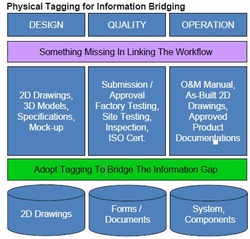Sun International RTLS System Case Studies
The Solution Architecture for RTLS Framework strengthens line-of-business and IT collaboration by supporting seven software capabilities critical to industry solutions:
- Asset, Device and Service Monitoring: Visualize infrastructure availability and performance through device, event and usage data to speed time to resolution.
- Business Process Automation
- Informed Decision Making: Use data and information aggregated from business and operation systems to analyze events and develop insights to improve business flexibility and performance.
- Improved Customer Experience: Deliver convenient, personalized customer experience to help consumers manage their energy consumption more effectively
- Business Process Automation: Model, manage, and optimize business processes resulting in faster time to market, increased customer satisfaction, and higher productivity
- Regulatory, Risk & Compliance Management: Manage large quantities of utility documents and processes to comply with government mandated regulations
- Security Solutions: Comprehensively manage and prevent security risk across all business domains
A: Material Management for Construction Site

In the dynamic world of construction, coordination is top priority. Inclusive in a construction site manager’s
daily tasks are the ordering, receiving, handling and distribution of raw material. Currently, these tasks
are handled using manual tracking with paper manifests, manual data entry in facility and material logs,
and perhaps through "mental notes" taken by the construction foreman. Certification documents and
general documentation to ensure proper material quality control are the main source of reference for
today’s construction sites. Likewise, when inspections are carried out, these same documents are often
the only form of reference for materials from a quality and certification standpoint. If that documentation
were to become misplaced, lost, or damaged beyond readability, there could be serious and costly delays,
and the construction company could potentially face steep fines.
As with any complex project, materials management needs to be as exact as possible. In the case of
construction projects that suffer from low productivity, delays, and cost overruns, the blame can often be
placed on poor materials management. Construction firms lack accurate, real-time information generated
through site use monitoring, material planning and inventory control. However, it is not an easy task to
keep track of this staggering amount of data in real time.
Imagine a real time status check of inspection reports and progress reports on your handheld computer
while you walk the site. Envision the confidence of project managers when they can electronically verify documents received and even see a picture of the documents on the shelf. The solution presented here, utilizes RFID to link the actual physical work to the information flow.
daily tasks are the ordering, receiving, handling and distribution of raw material. Currently, these tasks
are handled using manual tracking with paper manifests, manual data entry in facility and material logs,
and perhaps through "mental notes" taken by the construction foreman. Certification documents and
general documentation to ensure proper material quality control are the main source of reference for
today’s construction sites. Likewise, when inspections are carried out, these same documents are often
the only form of reference for materials from a quality and certification standpoint. If that documentation
were to become misplaced, lost, or damaged beyond readability, there could be serious and costly delays,
and the construction company could potentially face steep fines.
As with any complex project, materials management needs to be as exact as possible. In the case of
construction projects that suffer from low productivity, delays, and cost overruns, the blame can often be
placed on poor materials management. Construction firms lack accurate, real-time information generated
through site use monitoring, material planning and inventory control. However, it is not an easy task to
keep track of this staggering amount of data in real time.
Imagine a real time status check of inspection reports and progress reports on your handheld computer
while you walk the site. Envision the confidence of project managers when they can electronically verify documents received and even see a picture of the documents on the shelf. The solution presented here, utilizes RFID to link the actual physical work to the information flow.
B: Safety and Workforce Compliance

From a safety and compliance perspective,companies not only need to have the correct material on hand, but also the correct size, rated,
inspected material---- -this distinction can sometimes mean the difference between life and death. For instance, if a batch of general framing
material is mistaken or confused with support beam material, the resulting structure will not pass a safety inspection and ultimately will not be
safe to inhabit. Fixing such a mistake is extremely costly in terms of materials, labor, and lost productivity, not to mention the risk of missing
crucial deadlines or delaying further construction.
Rather than rely solely on compliance inspections to keep a worksite safe, the site manager needs to keep up-to-date information and maintenance on
all equipment used by employees.
With the addition of an automated real-time tracking system utilizing radio frequency identification (RFID), construction material management could become a more accurate and accountable method to facilitate the management and flow of information. Order and material planning and management could then
become a dynamically streamlined process.
inspected material---- -this distinction can sometimes mean the difference between life and death. For instance, if a batch of general framing
material is mistaken or confused with support beam material, the resulting structure will not pass a safety inspection and ultimately will not be
safe to inhabit. Fixing such a mistake is extremely costly in terms of materials, labor, and lost productivity, not to mention the risk of missing
crucial deadlines or delaying further construction.
Rather than rely solely on compliance inspections to keep a worksite safe, the site manager needs to keep up-to-date information and maintenance on
all equipment used by employees.
With the addition of an automated real-time tracking system utilizing radio frequency identification (RFID), construction material management could become a more accurate and accountable method to facilitate the management and flow of information. Order and material planning and management could then
become a dynamically streamlined process.
C: Work-In-Progress (WIP) Tracking

As with the management of construction materials, work-in-progress (WIP) tracking is currently carried out using a traditional paper rider system. For each major component (normally a physical foundation which is built upon), a paper rider in the form of a plastic folder or perhaps a binder contains documentation, including a component bill of materials (BOM). Knowing precisely where a product is during the process of manufacture is a critical piece of information, allow manufacturers to know in real time what goods have been finished and are ready to ship; how many are still in production; and when they will be finished for delivery. WIP tracking also prevents the loss of items during the manufacturing process, which can waste time and resources when the staff has to search for these items.
With the help of RFID, every time a component is moved, its location is scanned with a wireless connected hand-held RFID scanner connected to a GPS location device. The asset ID and its GPS location are reconciled and uploaded to a facility management database where the construction foreman or any relevant manager can access the information in real time. In addition, when major construction milestones have been met on a specific piece, these milestones are also available from the same facility management database.
With the help of RFID, every time a component is moved, its location is scanned with a wireless connected hand-held RFID scanner connected to a GPS location device. The asset ID and its GPS location are reconciled and uploaded to a facility management database where the construction foreman or any relevant manager can access the information in real time. In addition, when major construction milestones have been met on a specific piece, these milestones are also available from the same facility management database.
D: Real-Time Asset Accountability

RFID can improve asset management in a number of construction and facilities management scenarios.
• With passive RFID technology, real-time asset location can be accomplished with doorway and/or location systems that note the ‘‘last seen’’ location of a specific asset. In the case of a tagged laptop computer, server or other capital asset, this is a cost-effective and accurate alternative to a fully active RFID solution (not to mention these systems utilize smaller, more practical and ascetically pleasing passive RFID transponders).
• Especially relevant in the financial industry, but becoming more commonplace in the everyday office, is a security checkpoint that can scan personnel and visitors as they pass through entryways and exits. For the banking industry, making sure a laptop computer or other data storage device containing sensitive information does not leave a facility is not only a good practice to safeguard sensitive data---- -it is also the law.
• An asset may be checked in or checked out as part of an automated process ensuring accountability and responsibility for crucial assets. For example, an employee uses their employee badge (also containing a RFID tag) to check out a laptop computer. At the time of checkout, the tagged laptop’s ID is scanned into the checkout database along with the employee’s ID, the time and date. At any point afterward the asset manager may retrieve who is in possession of specific assets in real time.
• With passive RFID technology, real-time asset location can be accomplished with doorway and/or location systems that note the ‘‘last seen’’ location of a specific asset. In the case of a tagged laptop computer, server or other capital asset, this is a cost-effective and accurate alternative to a fully active RFID solution (not to mention these systems utilize smaller, more practical and ascetically pleasing passive RFID transponders).
• Especially relevant in the financial industry, but becoming more commonplace in the everyday office, is a security checkpoint that can scan personnel and visitors as they pass through entryways and exits. For the banking industry, making sure a laptop computer or other data storage device containing sensitive information does not leave a facility is not only a good practice to safeguard sensitive data---- -it is also the law.
• An asset may be checked in or checked out as part of an automated process ensuring accountability and responsibility for crucial assets. For example, an employee uses their employee badge (also containing a RFID tag) to check out a laptop computer. At the time of checkout, the tagged laptop’s ID is scanned into the checkout database along with the employee’s ID, the time and date. At any point afterward the asset manager may retrieve who is in possession of specific assets in real time.
